The first major scientific collecting cruise of marine life in the diverse Sea of Cortez was organized by Ed Ricketts and John Steinbeck in 1940. During the expedition, their crew made most of their collections at low tides. With their bent-over posture and slow head-scanning movements, they would inevitably draw questions from the locals:
“What did you lose?”
“Nothing.”
“Then what do you search for?”
This line has always made me laugh, not least because I’ve been asked this question or something close to it many times in my 40-year career of exploring the ocean. And the truth is, I’ve asked it of myself more than a few times.
Encounters with bioluminescence can make that question seem quaint. The open ocean is a fantastically strange and wonderful place. In this world without apparent hiding places, the game of hide-and-seek is played out on a daily basis with life-and-death consequences. One successful survival strategy is to hide in the depths during the day, below what we call the edge of darkness, and come up to feed in food-rich waters only at night, as the edge of darkness makes its way toward the surface. This is such a common solution to the problem of no hiding places that it is responsible for the most massive animal migration pattern on our planet.
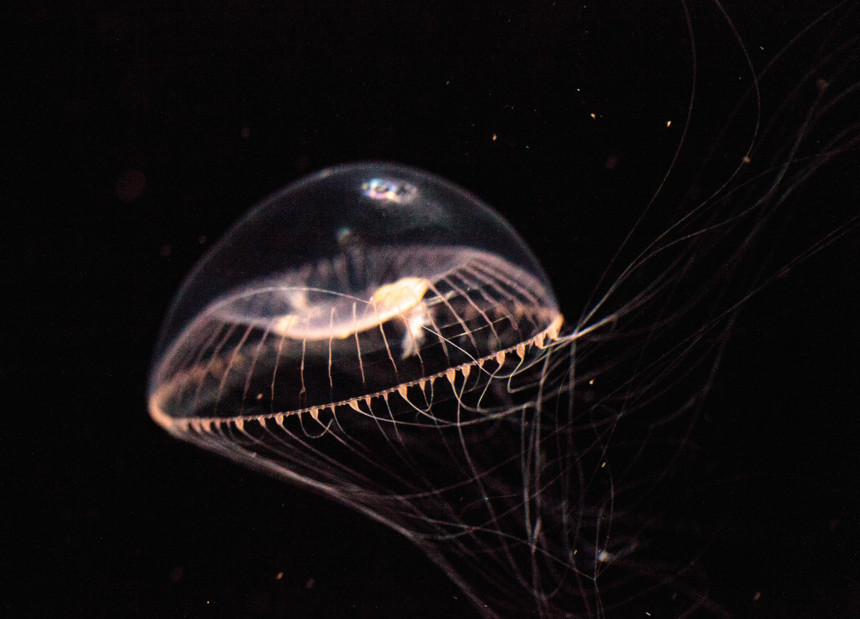
Vertical migration happens every day, in every ocean, and the masses of ascending animals form a layer so dense that more than one ship’s captain, scanning with sonar at sunset, has been fooled into believing they were about to run aground. Because so many of the ocean’s inhabitants have adopted this survival strategy, these migrants spend most of their lives in near darkness. To compensate, almost all of them make their own light.
Drag a net behind a ship almost anywhere in the ocean below the edge of darkness, and most of the animals you bring up in that net will make light. Given the volume of the open ocean and the vast watery realm between the ocean’s surface and its bottom, which constitutes the largest ecosystem on the planet, we’re talking about a world teeming with light makers. To put this in perspective, if most of the animals in the ocean are bioluminescent (from single-celled bacteria to colossal squid), then a majority of the creatures on the planet are communicating using language-of-light dialects that we don’t comprehend.
That there are even more spectacular light shows in the inky depths of the ocean was little known when I made my first deep dive. There was plenty of scientific evidence of bioluminescence’s presence in the form of light-meter measurements and net-captured creatures (mostly dead) studded with light organs, but there were very few direct observations, and none that captured anything like the spectacle I witnessed. This was a light extravaganza unlike anything I could have imagined. Afterward, when asked to describe what I had seen, I blurted, “It’s like the Fourth of July down there!” — a highly nonscientific description that got quoted in our local newspaper and for which I took a healthy dose of ribbing from my colleagues. However, I have had many opportunities since then to take people on submersible dives, and I have lost count of the number of times I have heard them described as “like the Fourth of July!”
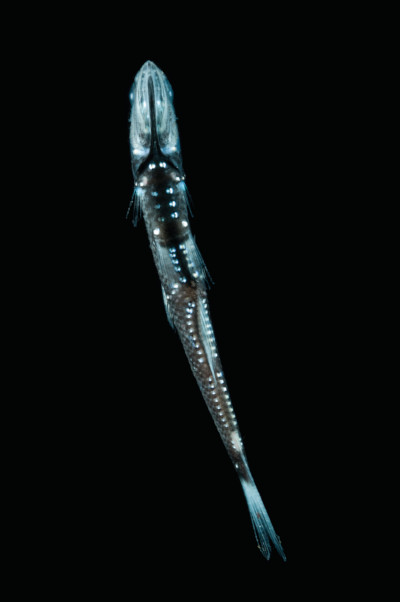
Just as fireworks are a kind of light painting, so is bioluminescence. But instead of the product of incandescence and human ingenuity, bioluminescence is cold chemical light, a consequence of millions of years of evolution resulting in fantastic light-emitting creatures with evocative names like crystal jelly, cockeyed squid, bearded sea devil, shining tube shoulder, stoplight fish, and velvet belly lantern shark. Their bodies are adorned with all manner of light-emitting structures — nozzles that spew liquid blue flame, incredibly complex light organs that look like flesh-encrusting jewels but behave optically like eyes that emit light instead of collecting it, and absurdly elaborate glowing appendages that resemble abstract sculptures of alien life forms from the planet Zork.
The desire to understand the natural world resides in all of us. Exploring and sharing knowledge about how the world works is foundational to our survival. In primitive humans, the drive to uncover the secrets of nature advanced essential life skills, such as finding sustenance and shelter and determining what animals were deadly and what food was safe to eat. In modern times, our drive to explore has led us to extraordinary discoveries, ingenious innovations, and some of our most fantastic achievements. So how is it possible that we have yet to explore what constitutes the largest living space on our planet — the deep ocean?
The greatest obstacle may be the widely held misperception that there is nothing left to discover on Earth. One of the rationales sometimes given for space exploration is that everything on this planet has been climbed, crossed, and spelunked. The truth is that the staggering reaches of the ocean that remain unseen exceed, by many times, all the territory ever explored. We seem to be in a catch-22 scenario where we haven’t explored the deep ocean because we don’t appreciate what a remarkable, mysterious, and wondrous place it is, and we don’t know what an astonishing place it is because we haven’t explored it. What makes this situation all the more untenable is that we are managing to destroy the ocean before we even know what’s in it.
In the course of human history, our pattern has been exploration followed by exploitation, but in the ocean we have managed to reverse the order — massively exploiting the ocean’s resources before exploring what’s actually there. In the past 60 years, we have altered the ocean more than in all of the preceding 200,000 years of human existence. We have stripped it of its big fish, using nets so enormous they could hold a dozen jumbo jets, and we have deployed hook-studded longlines as much as 100 miles long that target big predators like tuna, swordfish, and halibut but also snag turtles, dolphins, and even diving seabirds. We have harpooned whales, driving these magnificent, intelligent creatures to near extinction. Our bottom trawlers drag vast weighted nets across the seafloor, turning exquisite undersea gardens full of living beings into rubble piles that won’t sustain life again for hundreds of years.
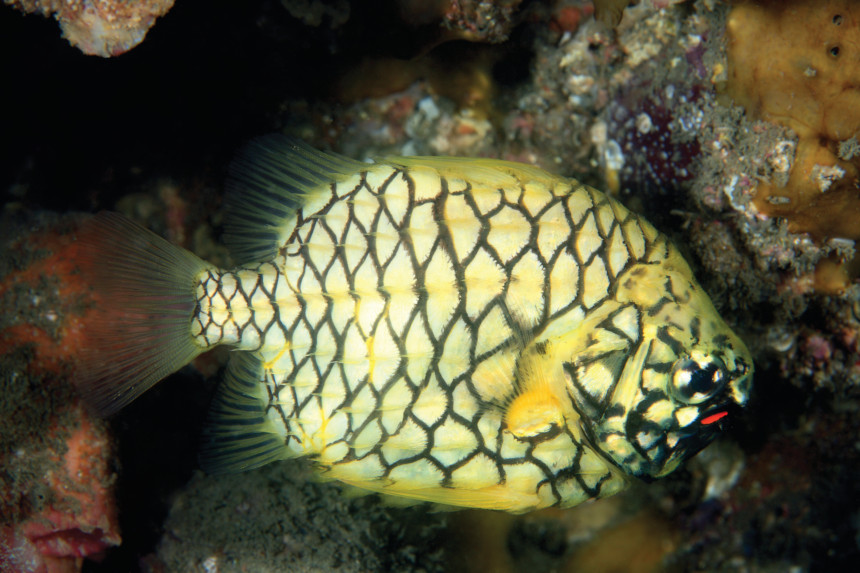
At the same time that we are pulling out every last fish, shrimp, and squid, we are filling the ocean with our plastics, trash, and toxins. It is estimated that by the year 2050 the ocean will contain more plastic by weight than fish. Traces of radioactive waste, PCBs, mercury, and chlorofluorocarbons are detectable in the depths of the ocean and for all we know are already impacting the life down there.
We are poised on the brink of massive destruction of oceanic ecosystems — systems that are vital cogs and wheels in the extraordinary machinery of all life on planet Earth. The enormousness of the ocean has managed to protect us from ourselves for a long time, but our exploding population and mismanagement of resources are beginning to overwhelm even its phenomenal buffering capacity.
For the past couple of centuries, the ocean has been working mightily to keep the all-important carbon cycle in balance by absorbing much of the vast quantity of carbon dioxide we have been releasing through the burning of ancient sequestered carbon, that is, fossil fuels. In the process, the ocean has been acidifying, because when carbon dioxide dissolves in seawater, carbonic acid is formed. Let’s pause for a moment to grasp the gravity of that statement. We are changing the chemistry of a staggering quantity of water — a volume of 300 million cubic miles! This change is beginning to alter the food web, making it difficult for keystone species like corals, shellfish, and sea butterflies.
The ocean has also been absorbing much of the extra heat that has been accumulating because increasing concentrations of greenhouse gases, like carbon dioxide and methane, in our atmosphere are preventing heat from radiating from the Earth’s surface and escaping into space as readily as it used to. That heat buildup has many worrisome implications.
Warming waters and melting ice are potentially altering the flow of the great rivers in the sea like the Gulf Stream. More than 60 miles wide and a half-mile deep, the Gulf Stream transports a volume of water that exceeds that of all the rivers in the world by 25 times, carrying warm water from the equator along the east coast of North America and across the great Atlantic to northwestern Europe. This is one of several massive rivers that flow throughout the ocean in a complex pattern known as the Great Ocean Conveyor Belt. Arising from density differences between colder, salty water masses and warmer, fresher water masses, the conveyor belt has major impacts upon weather as it moves heat around the globe. Changes in these flow patterns may already be linked to increasing droughts, floods, hurricanes, and wildfires; destabilization of agriculture and fisheries; and untold increases in human suffering.
There have been endless books, science papers, magazine articles, documentaries, and social media posts detailing the doom and gloom — to little avail. We are still essentially fiddling while the planet burns. There are a couple of psychological components to this.
One is illustrated by the boiling-frog story that claims if a frog is dropped directly into boiling water it will have enough sense to jump out, but if it is placed in warmish water that is heated slowly, it will hang around until it is stewed to death. Personally, I suspect frogs are smarter than that, and I certainly want to believe humans are.
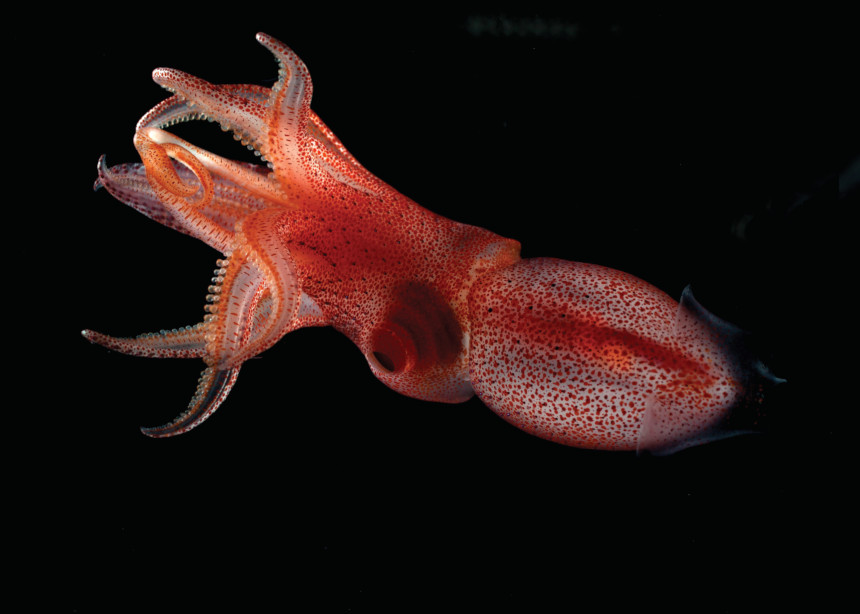
The other rationale for our inaction is the simple fact that the swelling drumbeat of decimation engenders such a sense of helplessness that people want to plug their ears and cover their eyes. But the beat goes on, growing ever louder, with the hope that if we just point out how truly dire the situation is becoming, the appropriate checks and balances will be brought to bear. Clearly that’s not happening, at least not on the time scale we need it to happen. In fact, in many cases the drumbeat seems to be having the opposite effect.
It has been said that Martin Luther King Jr. did not mobilize the civil rights movement by preaching, “I have a nightmare.” Nonetheless, that’s what many on the environmental front lines are doing. We need a different outlook, one that focuses on our strengths rather than our weaknesses. Exploration has always been the key to our survival, which is why I believe we need explorers now more than ever. Explorers are, by necessity, optimists who have to see beyond imagined limits to find a way forward. They push past the scary monsters at the edge of the map and have the persistence needed to pursue solutions in the face of seemingly impossible odds. Their tenacity often arises less out of an abundance of courage than from an abiding curiosity.
Throughout our lives, unexplored places that promise fantastic discoveries entice our imaginations. What few people realize is that most of our planet remains mysterious and unexplored. The ocean’s depths hold some of the most fantastic secrets about life on Earth and answers to questions we haven’t even thought to ask.
I have a quote pinned next to my office window, overlooking one of Florida’s ocean inlets: “The world will not perish for want of wonders, but for want of wonder.”* Our survival on this planet depends on fostering a greater sense of connection to the living world, and wonderment is key to forging that link. I have long believed that bioluminescence provides a means to reveal the wonder in this unseen world to a public that is alarmingly unaware and, thus, largely indifferent to what makes life possible on our planet. I believe it is a light capable of exciting the imagination and firing the inborn curiosity that defines the core of what it means to be human. I hope it can fire the imaginations of the next generation of explorers and in so doing provide a beacon of hope for the future of life on Earth.
*Attributed to G.K. Chesterton — “The world will never starve for want of wonders; but only for want of wonder.”
Edith Widder, Ph.D., is an oceanographer, a marine biologist, and co-founder of the nonprofit Ocean Research and Conservation Association, with a focus on developing innovative technologies to protect and restore the ocean’s most precious real estate: its estuaries.
From the book Below the Edge of Darkness: A Memoir of Exploring Light and Life in the Deep Sea by Edith Widder, Ph.D., published by Random House, an imprint and division of Penguin Random House LLC. Copyright © 2021 by Edith Widder, Ph.D.
This article is featured in the May/June 2022 issue of The Saturday Evening Post. Subscribe to the magazine for more art, inspiring stories, fiction, humor, and features from our archives.
Featured image: Way to glow! With their bioluminescent lures, Murray’s abyssal anglerfish (right) and the deep sea dragonfish (opposite) attract their unsuspecting prey. (Mauritius Images GmbH / Alamy Stock Photo (left); Nature Picture Library / Alamy Stock Photo (right))
Become a Saturday Evening Post member and enjoy unlimited access. Subscribe now
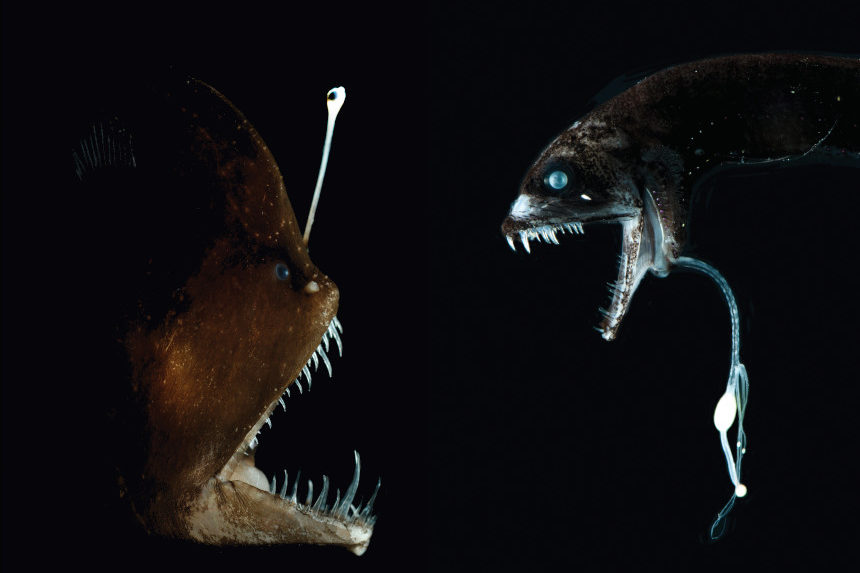



Comments
Thank you Ms. Widder for this insightful, fascinating feature. On the surface it might seem like a lite feature on bioluminescent aquatic sea life, but is far deeper and more serious. We ARE poised on the brink of massive destruction of our oceanic ecosystems which will (and already is) having dire consequences. All thanks to humans. The fact our oceans have been negatively altered more in the last 60 years than in the previous 200,000 is mind boggling and terrifying.
Still, I love and admire your optimistic attitude towards trying to fix this, and more explorers means it’s more likely there can be a turnaround despite the present predicament. But it’s going to take a laser-focused effort and stopping ecological destruction by the corporations. If this isn’t something that has to take precedence over money than nothing is. There has to be a way they can be profitable and environmentally responsible by going ‘green’ and cleaning up the messes that have been made. Surely we have the technology and resources to do that; please!!
I also want to thank the publisher of the Post for having this wonderful feature in the May/June issue. It is the latest in many articles the magazine has done over the past decade on the severity of our accelerating environmental crises, and the scientists that are working ’round the clock to help fix it. They can’t do it alone.
One of the biggest obstacles is that everyone is off in their own world now, with no collective consciousness for ‘the big picture’ or what’s best for the common good. I don’t know how that can be fixed, but there has to be a solution.